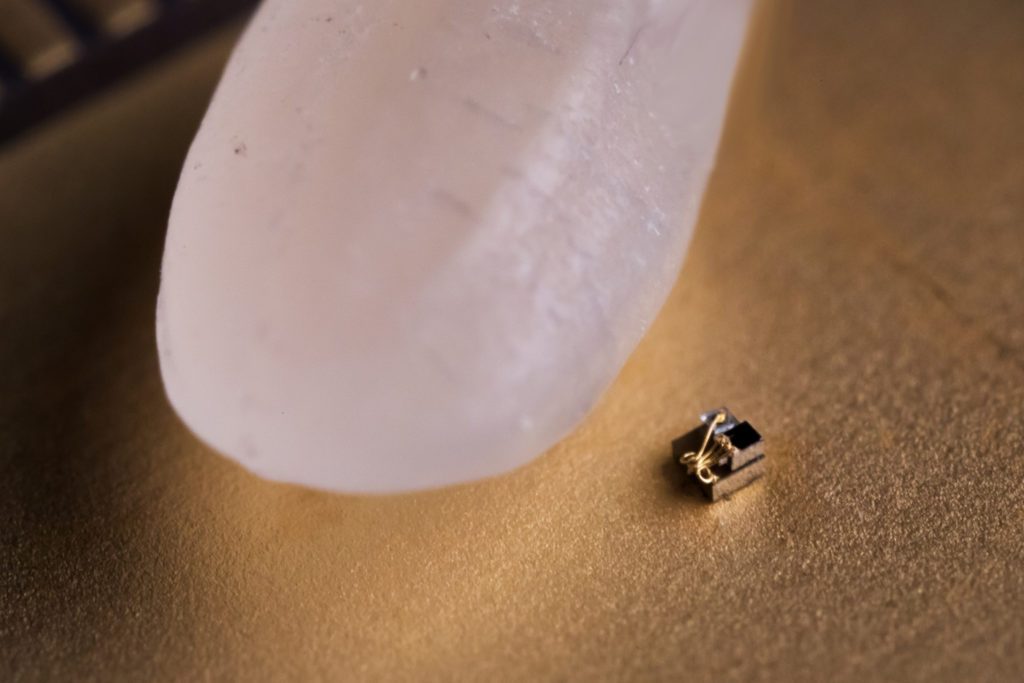U. Michigan Researchers Created A Computer That’s Smaller Than a Grain of Rice

Researchers at the University of Michigan may have invented the smallest computer in the world. Depending on what you call a computer.
“We are not sure if they should be called computers or not. It’s more of a matter of opinion whether they have the minimum functionality required,” said David Blaauw in a U of M news release. Blaauw is a professor of electrical and computer engineering and led the development of the new system with ECE prof Dennis Sylvester and Jamie Phillips, an Arthur F. Thurnau Professor and professor of ECE.
The device, which measures just 0.3 mm on each side, is dwarfed by a grain of rice. That is smaller than a device that IBM created earlier this year. Both inventions have raised an interesting question: What actually constitutes a computer?
From the Michigan news release:
Previous systems, including the 2x2x4mm Michigan Micro Mote, retain their programming and data even when they are not externally powered. Unplug a desktop computer, and its program and data are still there when it boots itself up once the power is back. These new microdevices, from IBM and now Michigan, lose all prior programming and data as soon as they lose power.
Whether you call it a computer or not, it was designed with a noble purpose: to use as a precision temperature sensor, ideally in oncology, where it could be used to measure the temperature in tumors.
“Since the temperature sensor is small and biocompatible, we can implant it into a mouse and cancer cells grow around it,” Gary Luker, a professor of radiology and biomedical engineering, was quoted as saying in the news release. “We are using this temperature sensor to investigate variations in temperature within a tumor versus normal tissue and if we can use changes in temperature to determine success or failure of therapy.”
If you want to read more about this little machine, there are many more details here.




